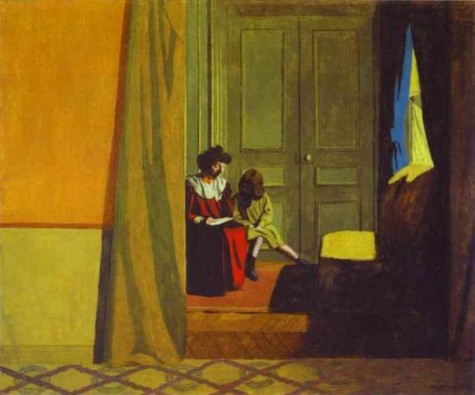
Introduction
In early February, a group called VIDA — formed in 2009 to “explore critical and cultural perceptions of writing by women” — released statistics about the gender balance, or imbalance, in literary magazines. You can see the stats here. And if you want to sample some of the thousands of responses to them, just Google “VIDA statistics +feminism.” There will be one or two blog posts here about the issue in the next day or two, but in the meantime — I asked some of the women who are contributors and friends to this site to write about a book (by a woman) that they think deserves more attention. The results are below, and I hope you enjoy them as much as I did. —JW
Lady Audley’s Secret by Mary Elizabeth Braddon (1862)
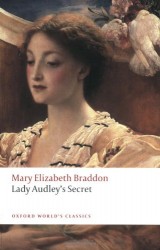 Wilkie Collins gets credit for popularizing the ‘sensation’ novel, and that’s fair. But he shouldn’t be allowed to keep all the recognition to himself. Not when a rival author, equally prolific in her day and equally popular with Victorian readers, galvanized the genre and tuned it to a more political register. Mary Elizabeth Braddon’s novels have found a toehold in academia in recent years, and Lady Audley’s Secret now shows up on college reading lists, but her great crowd-pleaser has yet to reach the lay readers of our generation, and it should.
Wilkie Collins gets credit for popularizing the ‘sensation’ novel, and that’s fair. But he shouldn’t be allowed to keep all the recognition to himself. Not when a rival author, equally prolific in her day and equally popular with Victorian readers, galvanized the genre and tuned it to a more political register. Mary Elizabeth Braddon’s novels have found a toehold in academia in recent years, and Lady Audley’s Secret now shows up on college reading lists, but her great crowd-pleaser has yet to reach the lay readers of our generation, and it should.
Braddon, like many recovered female writers, was sidelined once her contemporaries died off, but scholars have salvaged her laurels and set them back on her brow. Braddon’s best titles aren’t just fodder for academics or middling television producers; they’re some of the breeziest, most enjoyable novels ever written, and her prose remains accessible in 2011, no more archaically tricky than that of Brontë or Austen. Lady Audley’s Secret is a page-turner because it’s part detective story and part scandal sheet, and because its action is seen through the eyes of one of the most appealing male characters ever created, Robert Audley.
Curious, loyal, laconic, and perceptive, Robert is attached to French romances and to his best friend, George, who disappears soon after glimpsing a portrait of Lady Audley, the elusive new wife of Robert’s wealthy uncle. George’s vanishing throws Robert to the floor emotionally, and it turns him into a dogged investigator who crisscrosses an England of efficient trains, calling cards, and shiny wools in his quest for answers. However intriguing the mystery, and however fascinating Robert’s intimacy with George, it is the enigma of Lady Audley herself that puts the political marrow in the novel’s sprightly, peripatetic bones.
Braddon uses Lucy Audley’s circumstances and outrageous criminal behavior to query all manner of Victorian anxieties: the havens of gender role, class entitlement, and domestic sphere are shown not only to be vulnerable to corruption but breeding grounds for predators of unlikely mien. Read Lady Audley’s Secret as a proto-feminist squawk of indignation over essentialisms of sex and class, or just read it for the lively jaunt it is. Braddon’s underappreciated masterpiece deserves its place beside — or even above — Collins’ The Moonstone and The Woman in White.
—Ranylt Richildis
*****
A Word Child by Iris Murdoch (1975)
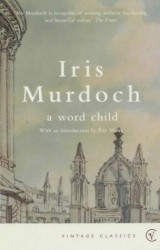 My copy is an old hardback from uncertain origins — perhaps someone’s stoop. Its dust jacket is torn and earnestly mended in several places, and Iris Murdoch herself scowls from its backside. Her eyes are pointed, her lips slightly pursed, bangs severe, brow dented in thought. The photo seems designed to intimidate, to make plain Murdoch’s credentials as a serious writer. But the novel itself— her 17th, but the first I read by her, many years ago — is full of a dark curdling humor, the kind that captures the interior hum of a perceptive man who knows that he is a loser, and who knows it is partly his fault.
My copy is an old hardback from uncertain origins — perhaps someone’s stoop. Its dust jacket is torn and earnestly mended in several places, and Iris Murdoch herself scowls from its backside. Her eyes are pointed, her lips slightly pursed, bangs severe, brow dented in thought. The photo seems designed to intimidate, to make plain Murdoch’s credentials as a serious writer. But the novel itself— her 17th, but the first I read by her, many years ago — is full of a dark curdling humor, the kind that captures the interior hum of a perceptive man who knows that he is a loser, and who knows it is partly his fault.
By nattering on about the physical book itself, my intent is not merely to fetishize pulp at a time when all is moving digital. Rather, it is to capture the sneaky thrill of discovery — the giddiness of possessing a secret prize — when A Word Child declared its goodness on the very first page. Hilary Burde, our unlikely first-person hero, crotchety before his time, is puttering about his London flat, stuffing his underwear inside his bed and “inhaling without displeasure the familiar badger smell.” A 41-year-old low-level bureaucrat of rigid manners, Burde reveals his soggy, sour disposition early, but with an amusing charisma. “Oh the piercing sadness of life in the midst of its ordinariness!” he howls on page three.
Burde, we learn, has plunged himself into this ordinary life with a certain penance. A betrayal, an affair, and a tragic accident compelled him to abandon his glittering academic career and live a life of anodyne lovelessness. A Word Child begins 20 years later, when Burde crosses paths with the man he once wronged, and the events of the past become present again.
Murdoch is not afraid of employing a full cast of characters to string a good rich yarn (in this case about love, redemption, and male haplessness), and she has a fine ear for dialogue. Full conversations rise from the page, real and rhythmic. And London plays a part, too, with its clammy chill and occasional graces (cozy pubs and milky teas). Murdoch conveys the city in winter, when all is cast in a “fuzzy damp cold dirty yellowish haze.” But this story works because Burde is so awkward and insightful, so funny and wrong. He wends about, empathetic and absurd, evincing love and wreaking havoc.
Murdoch’s novels have earned some odd criticism. She wrote too many, some say, so the themes blend too much. She had some good ideas about God and life, but she let schematic plots get the better of her. Or her novels reveal a preference for cheap thrills over grand ideas. Such huffs seem a little condescending. A Word Child is excellent. Why don’t people talk about this book?
—Emily Bobrow
*****
My Hollywood by Mona Simpson (2010)
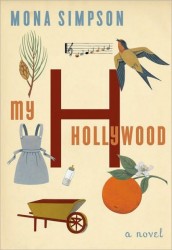 Considering how much time a writer puts into a novel — not to mention the other precious resources, mental and emotional, it consumes — we should measure the critical reception of a novel over years, if not decades. But so many new books are published that we now have the literary equivalent of an opening weekend at the box office, a brief month or two when a book either finds a place in the conversation or it doesn’t. A novel that’s released just before Labor Day can be all but forgotten by the time the first autumn chill sets in — which is what seemed to happen to My Hollywood, Mona Simpson’s latest, when it was published last August but received scant attention beyond abbreviated newspaper reviews.
Considering how much time a writer puts into a novel — not to mention the other precious resources, mental and emotional, it consumes — we should measure the critical reception of a novel over years, if not decades. But so many new books are published that we now have the literary equivalent of an opening weekend at the box office, a brief month or two when a book either finds a place in the conversation or it doesn’t. A novel that’s released just before Labor Day can be all but forgotten by the time the first autumn chill sets in — which is what seemed to happen to My Hollywood, Mona Simpson’s latest, when it was published last August but received scant attention beyond abbreviated newspaper reviews.
Beginning with her first novel, Anywhere But Here, Simpson has created characters and stories whose believability owes as much to the precision of her writing as to her willingness to reckon with the larger themes — striving, restlessness — that animate American life. My Hollywood begins with Claire, a composer of ambition and some achievement who hires a Filipina immigrant, Lola, to care for her infant son. The rest of the novel alternates between the two women’s voices, revealing their individual predicaments as well as the disparate concerns of their disparate worlds. Simpson gives their voices such subtlety and texture that what might sound like a rather schematic setup turns out to be a keen exploration of the American experience, with all of its attendant exhilarations and disappointments.
The critical reception, at least what little of it there was, was inadequate and ultimately misleading. Simpson was praised for her treatment of motherhood, and she was chastised for her treatment of motherhood; it was as if the general contours of her subject were all that mattered. But such fixations missed the point. And they also had the regrettable effect of consigning My Hollywood to the “motherhood novel” ghetto, where good books get lumped with bad books and serious critics fear to tread.
—Jennifer Szalai
*****
Disturbances in the Field by Lynne Sharon Schwartz (1983)
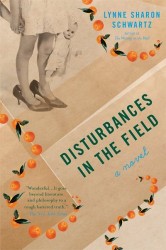 Disturbances in the Field will always be my personal ‘great American novel.’ I have been rereading it for 24 years — more than half my life. In my 20s, I found it a compelling, if unconsoling, exploration of the kind of adult life I hoped to have: at once intellectually rigorous and emotionally intense. In my 40s, I appreciate better the elusiveness and challenges of such a life, as well as the artistry with which Lynne Sharon Schwartz portrays its complexities.
Disturbances in the Field will always be my personal ‘great American novel.’ I have been rereading it for 24 years — more than half my life. In my 20s, I found it a compelling, if unconsoling, exploration of the kind of adult life I hoped to have: at once intellectually rigorous and emotionally intense. In my 40s, I appreciate better the elusiveness and challenges of such a life, as well as the artistry with which Lynne Sharon Schwartz portrays its complexities.
Superficially, Disturbances in the Field follows a familiar model: four dissimilar women meet in college and remain friends as their lives unfold. Schwartz’s achievement is to imbue their everyday dramas with the significance of philosophical reflection. Long after their first-year History of Philosophy course ends, the four women form a Philosophy Study Group to reconnect “daily life to the metaphysical.” “Our lives did not encourage abstract thought,” remarks Lydia , the narrator, but in fact the theories of Plato and Aristotle and Heraclitus provide interpretive keys against which the women test the mysteries of their own joys and sorrows. “Everything has two handles, one by which it may be borne, the other by which it may not,” reads one of the Golden Sayings of Epictetus. Lydia ultimately must find the handle that enables her to bear a devastating tragedy.
Lydia is a pianist, and her story is bookended by performances of Schubert’s Trout Quintet: “the melody pierces the heart, and the variations, like prisms, candid and relentless, flash the heart’s exposed facets.” Structurally, the novel also flashes the facets of life, interweaving past and present, memory and immediacy. Like the Quintet, too, it keeps poignancy and delight in a precarious balance. When Lydia performs the piece late in the novel, after her great loss, the integrity of the music demands that she risk opening herself fully to “the lyricism and the control; the exuberance and the briskness; the beauty that pierced; and the scent of a terrifying ambiguity throughout.” This is what Schwartz’s detailed prose and Lydia’s intensely personal voice demand also of us, as readers. By the end of the novel, we share the insight revealed to Lydia by the story of Thales, who measured the height of a pyramid using a man’s shadow: “From the size and scope of one human body you can discover immense secrets of the universe.”
—Rohan Maitzen
*****
Given Sugar, Given Salt by Jane Hirshfield (2001)
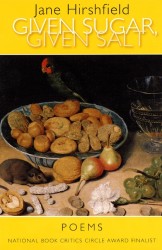 Perhaps the most moving moment of poet Jane Hirshfield’s Given Sugar, Given Salt is the one, a third of the way through, where we are allowed to imagine Chekhov, dying of tuberculosis, reading the timetable of trains. In Hirshfield’s hands, the romance of the moment (“smoke of blue trees out the window”) is tempered with the stench of vinegar, of pickled cabbage and boiled meat. The poem, which began with an instruction to use the artistic desiccant of distance liberally and Chekhov’s own exhortation to “write more coldly,” provides instead the immediacy of warm, briny food smells leaking from a hamper. “To what more earthy thing could he have been faithful?—,” she asks.
Perhaps the most moving moment of poet Jane Hirshfield’s Given Sugar, Given Salt is the one, a third of the way through, where we are allowed to imagine Chekhov, dying of tuberculosis, reading the timetable of trains. In Hirshfield’s hands, the romance of the moment (“smoke of blue trees out the window”) is tempered with the stench of vinegar, of pickled cabbage and boiled meat. The poem, which began with an instruction to use the artistic desiccant of distance liberally and Chekhov’s own exhortation to “write more coldly,” provides instead the immediacy of warm, briny food smells leaking from a hamper. “To what more earthy thing could he have been faithful?—,” she asks.
Hirshfield excels at immediacy, especially in Given Sugar, Given Salt, which might be her best book. Her later volumes are often described as Zen-like and ethereal, but this one anchors itself with a comforting particularity. A slap of icy water, an old dog watching the comings and goings in her kingdom, the “scented, muscular body.” It isn’t that she can’t talk in abstractions; in fact, her frequent invocations of heart, hope and grief would quickly irritate if they weren’t balanced so well with precision. Details are this book’s appeal. Descriptions of ordinary things — the dying dog, the remains of a meal — are shaded so closely that reading them is a sensory experience as much as a literary one. Read them twice: the reversals in many of her final verses get better the second time.
Most importantly, because the events she chooses to record are so familiar, to read them is an act of remembering on the part of the reader, and the repetition always feels fresh. You could say tedium is Hirshfield’s muse. So many pots, so much leftover soup, so many rodents and dogs and tree branches:
hours after the dishes are washed and stacked,
a metal bowl clangs to the floor,
the weight of drying water all that altered;
a painting vertical for years
one morning — why? — requires a restoring tap.
The plaintive “why?” is as flimsy as muslin, a verbal curtain separating one moment from everything that comes after it. But here’s the punchline: no matter how many times Hirshfield promises a break in routine, “the life you will describe afterward always as ‘after,’ ” it never arrives. A later book (titled After, appropriately enough) begins with yet another dish drying on the rack. Either we are good at forgetting, or our eyes never quite become accustomed to the light.
—Xarissa Holdaway
*****
I Love Dick by Chris Kraus (1997)
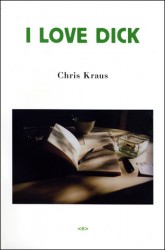 I can’t think of any book that truly explains the disparity between coverage of male and female artists better than Chris Kraus’ I Love Dick, which is exactly why it remains in the shadows and the reason why everyone should read it. Part memoir, part epistolary novel, part art theory and feminist manifesto, I Love Dick tells the story of what happens to Chris (its author) when she becomes infatuated with a literary theorist named Dick. She takes to writing him letters, and based on his lack of response, she reaches some stark conclusions about men, women, and art. To give you a taste of Kraus’ style: “Years later Chris would realize that her fondness for bad art is exactly like Jane Eyre’s attraction to Rochester, a mean horse-faced junky: bad characters invite invention.”
I can’t think of any book that truly explains the disparity between coverage of male and female artists better than Chris Kraus’ I Love Dick, which is exactly why it remains in the shadows and the reason why everyone should read it. Part memoir, part epistolary novel, part art theory and feminist manifesto, I Love Dick tells the story of what happens to Chris (its author) when she becomes infatuated with a literary theorist named Dick. She takes to writing him letters, and based on his lack of response, she reaches some stark conclusions about men, women, and art. To give you a taste of Kraus’ style: “Years later Chris would realize that her fondness for bad art is exactly like Jane Eyre’s attraction to Rochester, a mean horse-faced junky: bad characters invite invention.”
The crux of I Love Dick is this: because being female means “being trapped within the purely psychological,” or “the personal,” women’s art has failed to be read or accepted as “universal.” Kraus gives several examples of female writers, visual artists and performers whose work has been ignored or maligned because of its subject matter. She quotes a letter from writer Jane Bowles to her husband Paul, also a writer: “You immediately receive recognition because what you write is true relation to yourself which is always recognizable to the world outside . . . With me who knows?” Kraus finally asserts near the end of the book: “If women have failed to make ‘universal’ art because we’re trapped within the ‘personal,’ why not universalize the ‘personal’ and make it the subject of our art?”
Kraus is the author of several other books, including novels and criticism about the L.A. art world and video art. She is also a filmmaker, and the founding editor of independent publisher Semiotext(e), where she not only publishes her own work, but the work of Kathy Acker, Jean Baudrillard, Michel Foucault, Gary Indiana, Julia Kristeva, Eileen Myles, and Michelle Tea, to name a few. I Love Dick was her first novel, and it should be standard reading for every Gender Studies class — or to anyone interested in how art is received and reviewed in our society. It is a genre-busting book that bravely asserts there is a difference in the way men and women are treated not only as artists but as people, in a culture that would have us believe our work is greeted with equal enthusiasm.
—Jessica Ferri
*****
Dreaming by the Book by Elaine Scarry (1999)
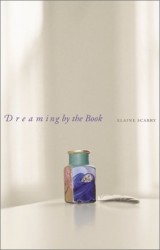 Try this quick mental exercise: imagine a pale, gauzy curtain fluttering in the breeze, then clear your mind and visualize a thick wooden shutter. Do you think the gauzy curtain was a more vivid representation of the real thing than the heavy shutter? According to Elaine Scarry in Dreaming by the Book, the answer should be yes. It is this strangely under-acknowledged phenomenon — the human brain’s greater readiness to imagine physical objects with certain characteristics, such as flimsiness and movement — that Scarry brilliantly argues has always been exploited by successful literary artists.
Try this quick mental exercise: imagine a pale, gauzy curtain fluttering in the breeze, then clear your mind and visualize a thick wooden shutter. Do you think the gauzy curtain was a more vivid representation of the real thing than the heavy shutter? According to Elaine Scarry in Dreaming by the Book, the answer should be yes. It is this strangely under-acknowledged phenomenon — the human brain’s greater readiness to imagine physical objects with certain characteristics, such as flimsiness and movement — that Scarry brilliantly argues has always been exploited by successful literary artists.
So, Flaubert draws attention to Emma Bovary’s sweeping dress, her silk parasol, her headscarf, not only to convey her vanity or her femininity, but in order to coax the reader’s brain into performing a task to which it is otherwise fairly resistant: conjuring a solid person out of thin air. Solid walls, too, can be aided in their mental creation by the convenient introduction of a more ethereal detail: when 10-year-old Jane Eyre finds herself relegated to the red room at Gateshead, Charlotte Brontë sends a “swift-darting beam” of light across the room, all the better for us to picture Jane’s surroundings. And how often do novelists describe a room where dust motes dance in columns of sunlight?
“Imagining,” says Scarry, “is an act of perceptual mimesis, whether undertaken in our own daydreams or under the instructions of great writers.” These instructions, if the writer is doing his or her job well, are embedded within prose and poetry so carefully and unobtrusively that we’re not conscious of, say, “seeing” the marching soldiers in the Iliad, partly thanks to the “glistening burning helmets” Homer has given them, knowing that our neurons and synapses are highly adept at fabricating moving lights.
These and various other compositional strategies are compellingly exposed in this groundbreaking investigation into how words on a page — flat, inert, devoid of sensuous qualities — are miraculously transmuted into fully fledged, three-dimensional worlds in the mind’s eye. Though you may never experience the act of reading fiction, or indeed the behavior of your own mind, in quite the same way again, any de-romanticizing of literary engagement is well worth the wonderment sparked by Scarry’s work.
—Emma Garman
*****
Slammerkin by Emma Donoghue (2000)
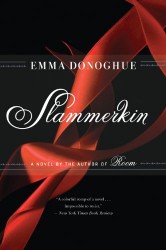 In 1980, Erica Jong published Fanny, a riff on Fanny Hill, John Cleland’s scandalous 1740s “memoir” of a Georgian prostitute. A student of the 18th century, Jong has an ear for the era’s prose, and her mock picaresque is betrayed mainly by its anachronistic characterizations and themes. Twenty years on, a lesser-known scholar-turned-novelist completed the triptych. Emma Donoghue doesn’t try to reproduce the style of the era in which she sets her story (and which she knows like the back of her hand), but Slammerkin fits neatly into the same collection as the novels of Cleland and Jong. Its prose is modern but its heroine — a mulish stroller blessed with beauty but cursed by sex and class — is richly archetypal.
In 1980, Erica Jong published Fanny, a riff on Fanny Hill, John Cleland’s scandalous 1740s “memoir” of a Georgian prostitute. A student of the 18th century, Jong has an ear for the era’s prose, and her mock picaresque is betrayed mainly by its anachronistic characterizations and themes. Twenty years on, a lesser-known scholar-turned-novelist completed the triptych. Emma Donoghue doesn’t try to reproduce the style of the era in which she sets her story (and which she knows like the back of her hand), but Slammerkin fits neatly into the same collection as the novels of Cleland and Jong. Its prose is modern but its heroine — a mulish stroller blessed with beauty but cursed by sex and class — is richly archetypal.
Mary Saunders, destined for the gallows, has enough hubris to seed half a dozen Greek tragedies, full of pride lubricated by envy and vanity. If Mary’s luxurious dreams and grasping behavior seem petty in the eyes of her contemporaries, Donoghue’s contemporaries can sympathize with Mary’s refusal to conform to the mean of low-born London women. But Slammerkin isn’t a rags-to-riches romance. Mary’s lot is as hopeless as her community says it is, but her ambition is humanizing. She doesn’t trade her body out of desperation for food but for a ribbon, which stands not so much for ephemeral luxury as it does for an even more ephemeral freedom — maybe the only brand of freedom available to her demographic.
Service of any kind galls her; her rage at the injustice of birth equals worth, and her inability to overcome it, never dissipates. No saccharine Yankee fable of courting a dream to its destination, this; Donoghue overturns the pursuit-of-happiness trope and leaves it struggling on its back. The author herself may not be a household name, but that’s changing. Donoghue’s novel Room was shortlisted for the 2010 Booker Prize, and her body of work — novels, plays, short stories, and scholarship — is meaty. Most of her tales investigate the queer concerns of gender, sexuality, and class in ways both casual and epic. Her style is pristine, but she’s inspired by the messy, irreducible worlds of folklore, desire, and crime, and the spirit of Angela Carter can be gleaned in her quotidian retelling of female history as fairy tale and tale of horror.
—Ranylt Richildis
*****
About the contributors: Ranylt Richildis is an 18th-century literature scholar and film critic. . . . Emily Bobrow is the Culture Editor of The Economist online, and the editor of More Intelligent Life. . . . Jennifer Szalai was the Reviews editor at Harper’s from 2003 to 2010, and currently lives and writes in Brooklyn. . . . Rohan Maitzen teaches in the English Department at Dalhousie University in Halifax, Nova Scotia, and blogs about literature at Novel Readings. . . . Xarissa Holdaway lives in Washington, D.C. She is working on a book about Proposition 8 and Mormonism. . . . Jessica Ferri is a writer living in Brooklyn working on her first book. You can visit her here. . . . Emma Garman is a writer living in New York. She can be visited online here.

